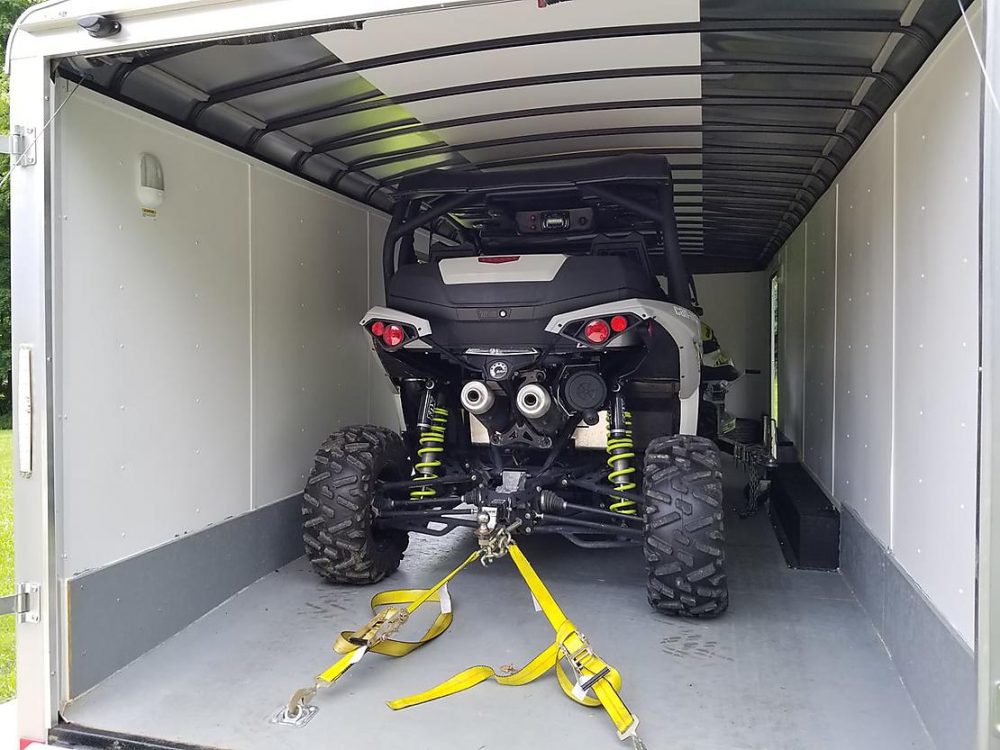Owning a vehicle is awesome, especially when you need to transport a certain item from one place to another. Cars, vans, and pickup trucks are great for when you’re moving out to another location because you can attach a loading ramp and get everything difficult to move by yourself into the vehicle. Transporting from there on is easy as one two three.
However, the main concern for a lot of people is setting up the loading ramp, and most importantly, securing it. It’s very useful to know how to do this properly to avoid any possible accidents, injuries, or unwanted property damage.
In this article, we’re going to help you learn about the most important parts of the entire loading ramp setup procedure, so if you currently need to accomplish a task like this, or you’re just a curious person looking to learn some more, feel free to continue reading until the end. Let’s take a look at what you need to know.
1. Find a good spot with a lot of space
Before you begin with everything, it’s really important to park your car at a spot where you have a lot of free space to operate. This will allow you to re-park, or change the angle of positioning in case you run into any difficulties. Usually, people don’t have a lot of choices when it comes to this, so they usually park in front of their garage.
2. Make sure it’s not a rainy day

Ask any experienced person and they’ll tell you that the most important thing is to do this on a location that’s not oily or wet. We all know that when things get slippery, and heavy objects are involved, injuries and property damage is quite a common occurrence.
If it is a rainy day, and you have to load some items or another vehicle in your already existing transportation truck, try to find a spot where the ground is wet. You don’t want to risk the ramp slipping out.
3. Park lower than your standing point
The angle at which you’ll have to load the object or the vehicle needs to be a lower degree, and you’ll have a much easier time. This can be achieved by parking your car slightly lower than your standing point, if possible. Doing this even has a slight impact on the security factor as well because the angle at which you have to work is not that steep. You’ll have to use less force, meaning you’ll even save some time.
4. Know the maximum weight limit

Since we already mentioned security, this is probably what makes the most difference, and knowing the exact number will help you evade any accidents. Every loading ramp has a weight limit, and you need to know what the one for yours is.
5. Get yourself a custom-made model
Sometimes you’re in a very unique situation where the ramp needs to be shaped exactly for your needs, otherwise you won’t be able to use it. This seems pretty disappointing at first when you realize that your situation calls for a custom-made model, but we have just the right answer for you.
Thankfully, there are dedicated companies such as SureWeld where you can get quality and custom-made ramps, or purchase the already pre-built ones if you find that one matches your needs. They’re made from Aluminum, so feel free to visit them and see what they have to offer.
6. Use safety gear

No matter what it is that you’re pushing on those loading ramps, whether some items or an ATV, it is important that you use safety gear. Despite the slow speed at which the ATV is moving, if something goes wrong you always want to have your head protected at all costs. From all safety gear items that you can have, everyone tends to think that the helmet is the most important piece, but you shouldn’t neglect the other ones as well.
7. Combine two into one
Sometimes you need the ramp to be a lot longer than it is, whether because of the terrain or because it’s tricky to load things from your standing point to where your other vehicle is parked. Thankfully, you can improvise and combine two of them in one, allowing you to gain a lot more space.
Only do this when you are sure that you have at least some experience, or when you have someone helping you. If the two ramps somehow end up detaching, or the gap between them becomes larger than intended, you are risking damage to the object you’re transporting.
8. Use the safety straps

Most ramps come with a safety strap, and depending on the model you got, they can either come with one or multiple. Either way, you need to use these because they can fixate your vehicle and the ramps, providing more solid support and reducing the chances for something going wrong. They’re fairly easy to use, and you’ll immediately know how once you see how they look.
9. Do the final checks
Once you have your safety gear on, you parked your vehicle at a lower standpoint than where you’re standing, and you’ve strapped everything correctly, it’s time to do a final check. This final check can include moving the ramps to ensure that they’re stable, checking the angle at which you’ll have to operate, and beginning the procedure.
You should approximately know what the maximum weight for your model is, and then weigh the objects you’re going to push on it. Usually, if you’re not transporting an ATV or something that weighs a lot, you shouldn’t run into the maximum weight issue, because most models can hold up a lot of weight. Make sure to check though, because minimizing the risk for a disaster is more than welcome in such situations.
Conclusion

Loading ramps are a very useful tool, and they allow you to place certain heavy items or other vehicles into your main vehicle. They are relatively easy to use, but they do require a bit of practice and adjusting until you have everything right. Make sure to use protection and use our tips from above to enhance your entire experience.



